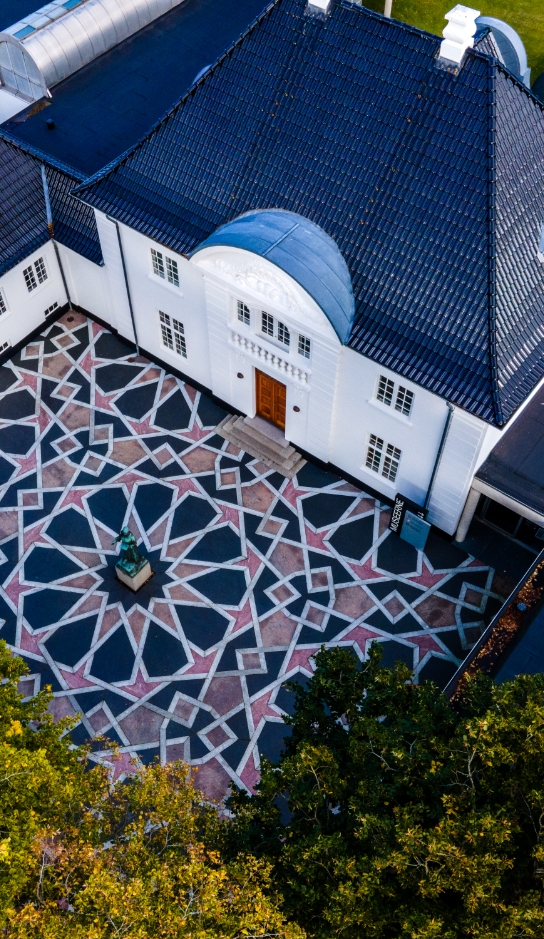Olivia Holm-Møller
– A Circle of Artists
Special exhibition
”I have done my best, but I am very apprehensive when I see the names of the jury members. My works will probably be rejected. I suppose you’re submitting works, too? It’s not pleasant sending them to Charlottenborg again. It would be a much better idea for us to join forces some time in another joint exhibition, it’s the only satisfactory way to exhibit."
Letter from Holm-Møller to Colsmann,13 February 1927
The above quote is from a letter that Olivia Holm-Møller (1875-1970) wrote to fellow artist Carla Colsmann (1887-1974), in which she expresses her frustration at the juried exhibitions of the day, and suggests to Colsmann that they should take part in another joint exhibition, which she describes as the only satisfactory alternative. Olivia Holm-Møller – A Circle of Artists Around 1900-1930 deals with this hitherto undescribed exhibition community in Danish art history.
An art scene in dissolution
In her breakthrough years, Olivia Holm-Møller was highly aware of the existing difference between the so-called traditional art based on figuration and realism, and "the modern direction", as she herself termed the emerging modernism in Danish art, which was in its formative years at the time and had not yet settled into the narratives of abstraction, avant-gardism and criticism. The purpose of art and its expressive problems were thus the subject of lively debate in the art world.
Taking matters into their own hands
In 1910, Holm-Møller, who worked at the time as a sculptor, joined forces with the painters Sophie Pedersen (1885-1950), Bizzie Høyer (1888-1971), Marie Graae (1876-1944) and the aforementioned Colsmann. The five artists knew each other from the Royal Academy’s Art School for Women and the art scene in Copenhagen in general. Together they took matters into their own hands and submitted an application to Kunstforeningen (the Art Association) asking about the possibility of holding a group exhibition.
The three most critically acclaimed, and most productive, artists in the circle were Holm-Møller, Colsmann and Pedersen. They continued their correspondence and close collaboration, and subsequently exhibited as a trio three times, in 1916, 1920 and 1924. This gave them a degree of access to the art scene that they would not have been able to achieve individually. They did not have a joint name for the group, or a common ideological programme for their art, but they exhibited their many works side by side in a strategic alliance that gave them greater freedom of action and more exposure in an otherwise hierarchical art scene that was dominated by men.
The exhibition
Olivia Holm-Møller – a circle of artists focuses on the four exhibitions held by the group, and brings several of the works together again for the first time in over a century. Through excerpts from Holm-Møller’s letters and reviews in the daily press, the exhibition paints a portrait of a time marked by upheavals and unequal exhibition conditions – but also by a rich diversity in the art Holm-Møller saw around her as she worked towards her artistic and exhibition breakthrough at the beginning of the century, and switched role from sculptor to painter.
Olivia Holm-Møller
The background to the exhibition is that Holstebro Kunstmuseum has been working with Olivia Holm-Møller’s artistic practice in recent years, both through research and in the context of exhibitions. Part of these efforts have involved transcribing Holm-Møller’s almost 450-letter archive. The above quote is an example of the dialogues that Holm-Møller had with Colsmann and Elise Konstantin-Hansen, amongst others, about their conditions and exhibition opportunities. For this reason, the letters feature prominently in both the exhibition and the accompanying catalogue.
Exhibition catalogue
The exhibition is accompanied by a catalogue that presents the artists of the circle and their exhibition collaborations during the period. The catalogue includes contributions by curator Teresa Østergaard Pedersen and art historians Inge Lise Mogensen Bech, Ulla Angkjær Jørgensen and Pernille Zidore Nygaard. The catalogue is available in the exhibiton and in the museum shop.
The exhibition and catalogue are supported by:
The five artists joined forces in a collaborative exhibition not because of a convergence of artistic expression, but because they wanted to exhibit as far as possible on their own terms.


